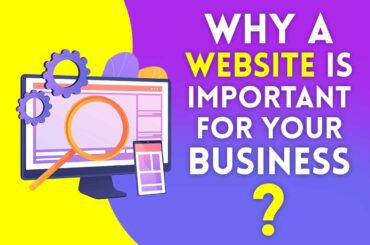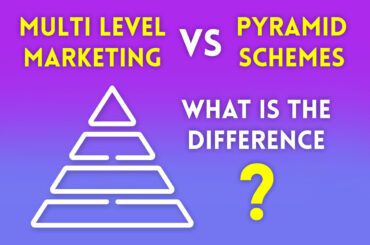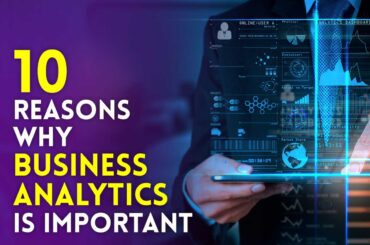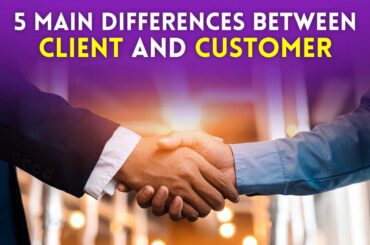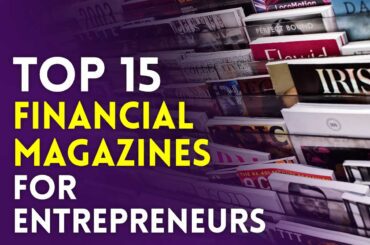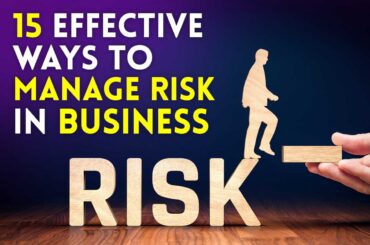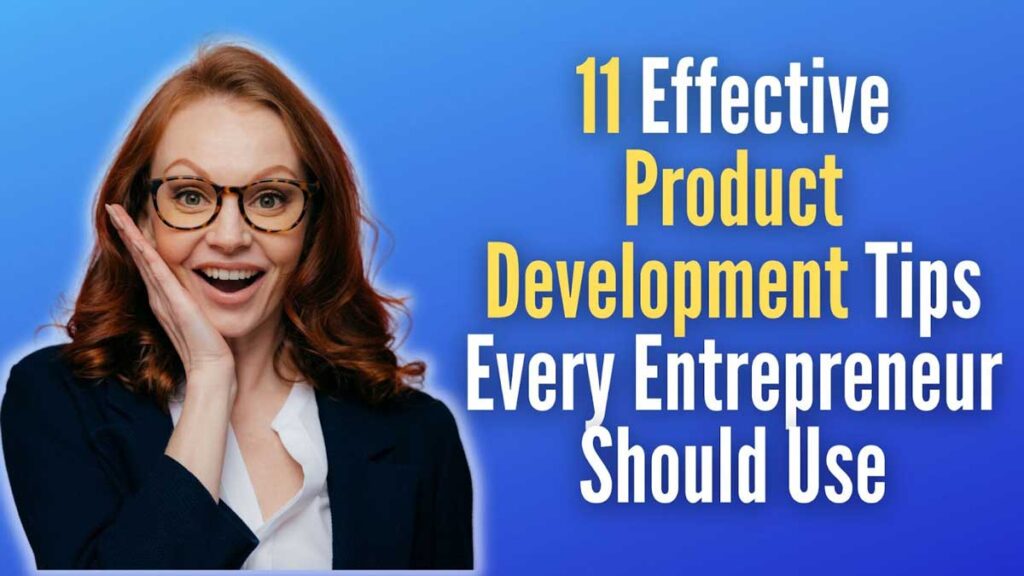
Creating a new product frequently has a magical air for most seasoned business owners and aspiring entrepreneurs.
The path to a final product never resembles a straight line, as is frequently visible when you hear the origin stories of other successful e-commerce enterprises. For instance, Tina Roth-Eisenberg inspired the creation of Tattly after her daughter brought home some semi-permanent tattoos that she felt were lacking.
The now-famous phone accessory, PopSockets, was created by David Barnett. He had to educate himself on how to use 3D design software.
These inspiring stories don’t, on their own, offer a step-by-step guide for product development, but the similarities they share highlight some of the routine actions entrepreneurs take before launching a company and distributing a finished good.
Numerous factors are necessary for effective product development. In this article, we’ll cover some basics about product development and mainly focus on giving you product development tips to help you bring your vision to life! So let’s get started with the basics.
What Does Product Development Mean?
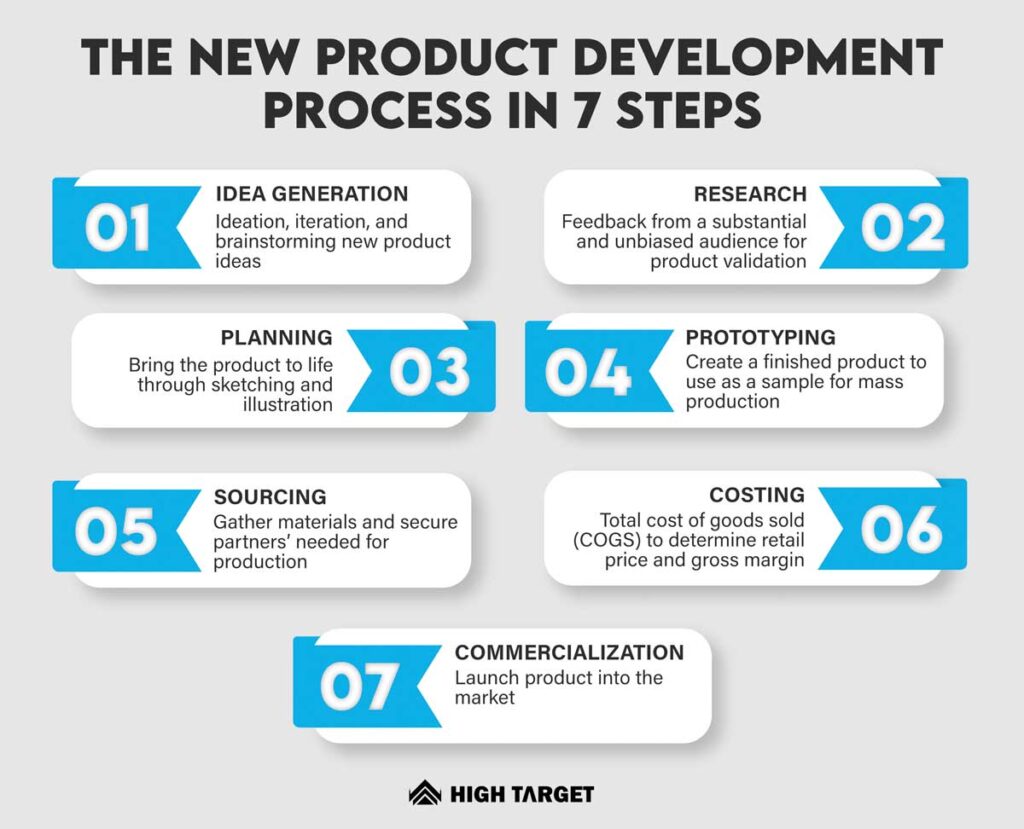
Product development is the term used to describe bringing a product to market. Additionally, it includes improving a current product and launching an old product into a new market.
This entails figuring out the product’s concept, developing the product roadmap, releasing the product, and gathering customer feedback.
Product design’s fundamental component is new product development (NPD). Till the conclusion of the product life cycle, the process is not complete. By expanding or including new features, you may continue to gather customer feedback and iterate on future versions.
Product development is a multifaceted job. Product development integrates all departments of a company, whether it is a startup product or an established corporation, including design, engineering, manufacturing, startup product marketing, UI/UX, and more. Defining, designing, building, testing, and delivering the product involves each group.
Examples Of Product Development
Let’s take a quick look at what you would need to take into account across three of the biggest and most well-established industries: fashion and clothing, beauty and cosmetics, and food and beverage. Since the product development cycle will inevitably differ by business.
Due to the abundance of thoroughly researched case studies that may serve as inspiration, these three sectors offer relatively simple pathways to product development.
Food And Drink
Food and beverage products are among the simplest to begin creating for a low investment, all from the convenience of your own home.
Like Lara Merriken did when she founded Lärabar, creating a new energy bar may be as easy as purchasing the ingredients and making changes to the recipe in your own home.
You must locate a commercial kitchen approved to prepare food and have passed a health and safety inspection. If you want to go from a recipe to packaged items, you can sell them in shops or online.
However, if you are thinking about mass production and packing, a co-packer or co-manufacturer would be a better choice. These kitchens often have ovens and cooking equipment to accommodate huge batches. These factories specialize in handling raw materials and making large quantities of food and beverage items.
There are other things to consider about:
- Labels and precautions. Ingredients lists and nutritional data must be displayed.
- Laws and rules. You must abide by the laws of various nations regarding nutritional advice, allergy warnings, and health claims.
- Expiration dates. Understanding the lifespan of your product will help you plan how to manufacture, package, and store it.
Clothing And Fashion
The traditional method of product creation in the fashion business starts with a hand-drawn sketch or its digital counterpart created with a tool like Procreate.
Then a pattern maker or seamstress turns the sketch into a sample. A size set is developed during the prototype stage, which comprises a variety of samples with various measurements for each size you wish to sell. Production begins when the size set has been decided upon.
Some fashion and apparel companies decide to create their items using print on demand in the beginning as opposed to making the startup product themselves.
You may upload designs to third-party software that links your business with a warehouse and a screen-printing facility using print-on-demand. Instead of having to create the complete garment, when an order is placed online, your design is printed on the existing stock of t-shirts, sweaters, or available other products.
Other things to consider about:
- Post tags. the brand name tags that hang on clothing typically include details like price, size, etc.
- Labels. The fabric tags sewn or stamped into a garment often provide details on the fabric’s composition and how to care for it.
- Test washes Putting your product through wash testing can help you determine how well it will hold up over time and how to take care of it.
Skincare And Cosmetics
Due to the growing popularity of wellness and self-care practices, the beauty and cosmetics sector offers various items.
Many beauty firms are emphasizing all-natural ingredients and sustainability in their cosmetics, skincare, bath products, and other items, which makes it simpler to develop your startup product using components you may find in your kitchen.
The beauty and cosmetics sector is likewise a hotbed of white labeling. It involves locating a current manufacturer or product, then packaging and rebranding the goods they already make. Regardless of your path, mass production for cosmetics is often done by collaborating with a lab and a chemist to ensure quality is constant at scale.
Other things to consider about:
- Labels and precautions. List all components that went into the product, along with any possible reactions.
- Laws and rules. Study the FDA rules and how they apply to your product and packaging, including where they are made and where you plan to sell them.
- Life span. Conduct testing and provide items with the required expiration dates.
Now we know what product development is and its examples. Let’s get into the main content you all have been waiting for.
11 Effective Product Development Tips Every Entrepreneur Should Use
1. Use Consumer Feedback And Surveys
There is no better method to find out what features your clients want than to ask them directly.
Take note of what is stated in your online reviews and collect input from your target market and current consumers through customer surveys and interviews. Ask your staff to interact with customers how you might better understand their needs, concerns, and wishes. Afterward, depending on the information your study gave, build your product (as well as your consumer persona).
Here are some tips for getting insightful consumer data if this is your first time doing surveys:
- Use a platform for surveys. Don’t merely email your consumers with the survey questions. Make use of a survey website. Using a survey platform allows you to track client feedback instantly rather than manually reading emails to collect responses. With specially created surveys, survey platforms effectively improve the customer experience.
- Pose smart questions. Avoid asking general questions such as, “What features would you like the product to have?” Many times, your consumers are unsure of exactly what they want. Instead, enquire about the obstacles and issues you have using our product as well as what you would like to be able to do to address the issue. Specific questions will result in more realistic responses.
2. Build A Prototype
Depending on your sector, it could be beneficial to develop a prototype product to test for usability, defects in the design, and safety concerns. You can create a rough version of the product or a single component to work out any problems before creating a full-scale, complex prototype.
New technologies like product-design software, 3D printing, and other forms of additive manufacturing have made creating a prototype simpler and more affordable than ever before. If you don’t want to spend much on your equipment, you may use an additive fabrication service.
Using fabrication laboratories (also known as “fab labs”) is an additional choice. In this area, you may rent tools for making products such as 3D printers, laser cutters, milling machines, cutters for molds and vinyl, tools for electronics assembly, and sewing machines. Some fab labs also guide product design.
3. Apply The Skyscraper Approach
Although Brian Dean’s skyscraper approach is frequently used in the area of content marketing, a lot of its principles equally apply to product development.
The skyscraper method involves three steps:
- Search for stuff that deserves links.
- Improve something even more.
- Speak to the appropriate people.
You should carry out the following while using the skyscraper approach for product development:
- Make a list of the top-performing items from your competitors (in terms of sales).
- To create something better, mix everything (and then some).
You’ll develop a fantastic startup product that your clients will unquestionably value.
For your clients, your product should be a one-stop shop where they can acquire everything they require without purchasing two or three other goods to address their issues.
For instance, after the release of the iPhone by Apple, consumers were no longer required to wear watches and carry around cell phones, music players, and cameras.
4. Develop A Realistic Buyer Persona
Buyer personas are fictional characters created by your team to describe and represent your ideal clients. They are representations of your imagined consumers based on your study; they are not actual customers.
Making a fantastic product requires designing it based on a precise consumer profile. A realistic buyer persona guides you toward the appropriate features and prices while providing you with knowledge about efficient marketing.
Start with the following information to develop a realistic consumer persona:
- Financial situation
- Place, area, and type (for example, southern U.S. – suburbs)
- Occupation
- family circumstance (single, married, parents, etc.)
- Education level
- Priorities
- Buying customs
- Hobbies and passions
- Price volatility.
- Availability of time
These are just a few of the information you may include in your buyer persona. The better is to be more detailed.
Your buyer persona may initially resemble something like this if you’re selling high-end baby products:
- parents who are in their 30s and have graduate degrees
- $150k in household income
- birth of a first child
- living in a large city
- work in industries
- Always in a rush, balancing work and personal life
- worried about the newborn
- You want a design that looks costly, is simple to use and has high-quality products.
- Prepared to spend money on reliable baby equipment
You can add more information as you learn more about your target market. You (and your team) may visualize your ideal consumer by using images in your buyer persona.
Develop your product based on the dynamics of your realistic consumer persona.
5. Keep Your Minimal Viable Product In Mind
In his book The Lean Startup, author Eric Ries suggests that instead of concentrating on creating the greatest product possible, entrepreneurs should create a “minimum viable product” (MVP.).
The question is: What is the least amount of functionality needed to assess the feasibility of a product if I want to bring it to market? That may seem counterintuitive to some. A lot of times, the MVP is simpler than you think, and you nearly always don’t need a lot of seed money to build one.
We released an application that was completely developed even though we probably could have done so with simply a video player for comedic content.
Start small. Think about what your minimal viable product is and how to make it a reality your passion if you’re a new entrepreneur, scared that you’ve taken on more than you can handle. Offering a minimum viable product is all it takes to demonstrate the value of your idea; if you’ve concentrated on that, then expansions and upgrades will automatically follow in due course.
6. Competitors Can Teach You A Lot
You may get valuable (and free) marketing knowledge from competitors, such as a clear understanding of what is and isn’t working in the market.
Look at the details and features of competing items on the manufacturers’ websites and product review websites. Pay attention to qualities that clients praise and qualities that make them angry, frustrated, or disappointed.
Most likely, the competitors you face are identified in your company strategy, along with the reasons why. You should get knowledgeable about the strategies they do to succeed if you want to put your company in a position to exceed them.
You’ll get a lot of insight if you learn about how they sell their services, their pricing strategy, their value-adds, their media presence, and what sets them apart from the competition. You’ll be better equipped to see chances for market share and expansion when you know everything there is to know about your business and the businesses of your competitors.
7. You Are Not Your Customer. Never Forget That
You are not your client, so stop acting like one. It’s a straightforward idea, yet I’ll never forget what a lecturer told me repeatedly in management school.
It doesn’t necessarily follow that the end user will use the product the way you anticipate, whether it’s a new mobile app, a new clothing line, or something in between, simply because you believe you know what they need.
Even while it could be tempting, you shouldn’t base the creation of a product for the market simply on your own experiences. Even among entrepreneurs, it’s simple to miss this concept.
I had to learn this lesson the hard way. Initially, I used to get annoyed when, for instance, 100 users downloaded the app, but only 50 of them used it frequently. In situations like these, it might be easy to turn inside and question your actions.
However, when you put yourself in the consumers’ position, the skies start to clear. What drives these people? Why do they feel the need to tell their friends about this? Regarding product creation, your ego is frequently one of the largest roadblocks. Therefore it’s critical to practice putting yourself in your target audience’s shoes regularly.
As a result, we discovered that our app had thousands of devoted users who were using it nonstop for millions of minutes. Whatever the cost, they were determined to use it. These folks proved excellent at providing feedback; they weren’t scared to express their likes and dislikes of the product.
In exchange for their continuous honest comments, we awarded those men and women free accounts, turning them into influencers. This strategy consistently makes me feel our most valued customers are being looked after while also giving us useful information on how to enhance user experience in the future.
8. Create A List Of Ideas
Regular brainstorming sessions are crucial for sorting through ideas and identifying the ones that can carry your business to new heights. However, when they are poorly organized or are taken over by participants with strong opinions, these sessions frequently go off course.
According to To, effectively preparing for a brainstorming session requires far more effort than the session itself.
Establish a specific problem question that the session will address first. List any time or resource restrictions for solutions as well. Next, choose a moderator who can maintain the meeting flow and guarantee that everyone has a chance to speak.
Additionally, choose a large group of participants, including unbiased individuals, those impacted by the topic at hand, and anybody who has publicly discussed the site of pain.
Plan to dedicate a day to a day and a half to the session. There are several methods to organize it. For instance, the facilitator can start by asking for or listing solutions to solve the issue. Following sorting and discussion, participants can choose the best ideas.
9. Create A Marketing Strategy
It’s time to introduce your product to the public once you’ve polished your prototype, selected the ideal manufacturer, and taken care of all the necessary legal requirements. Here are some concepts to think about while developing your marketing plan. However, the precise processes you use will differ.
If you want to sell products online, having a fantastic eCommerce website is a must. However, you must also support your website with a strong digital marketing campaign that engages your audience from awareness to purchase. In other words, you need to know how to persuade people to see you, think about you, and then visit your website to execute the desired action.
You could employ various marketing strategies depending on where in the funnel your consumer is. For instance, if you want to target customers who urgently want your goods, you can decide to concentrate your paid search advertising on high-intent keywords.
Don’t allow fear to stop you if you have a business concept that you want to pursue. Millions of would-be company owners can start a new product thanks to the tools and resources accessible to entrepreneurs today.
10. Innovatively Expand Out From Your Primary Product
Unquestionably, people return to your business because of your main product. However, you are producing an already-existing good. You want to offer something the client needs but can’t have while creating a new product.
It would be ideal if this enhanced rather than replaced your primary product. Like when FedEx defeated UPS by developing cutting-edge package tracking technology.
Design thinking is a well-liked method for finding potential other ways that may not be immediately obvious. Breaking down our assumptions and challenging everything is at the heart of design thinking.
The five-phase model put forward by Hasso-Pattner is one approach for design thinking. These five steps can be carried out in any sequence, even simultaneously, and are not always done in order.
- Understand your customers.
- Describe the requirements, issues, and observations you have regarding your users.
- Challenge your presumptions to generate ideas.
- Create a product prototype. Always try to be the MVP.
- Check to determine if the product addresses the issues of your users.
A wonderful method for developing original ideas is to challenge presumptions. You start by identifying every assumption you have about a certain product.
Then you challenge them. “What occurs in one round of a board game doesn’t affect subsequent playthroughs,” said Rob Daviau. Legacy board games, the trendiest invention in board gaming during the past ten years, were created by challenging that assumption.
11. Always test your product
You could believe you are prepared to offer your new product after conducting your study and creating it. Before you act, consider the following:
- Does it carry out its intended function?
- Is it enduring?
- Is it reliable?
- Are the size and weight correct?
- Is using it simple and intuitive?
- Is it aesthetically pleasing?
- Is it different from similar products?
Make sure to test the product not just with your design team but also with members of your target market. Consider establishing a VIP club for your most devoted clients, inviting them to test your offerings and provide feedback in exchange for early access.
Things You Shouldn’t Do When Developing A Product
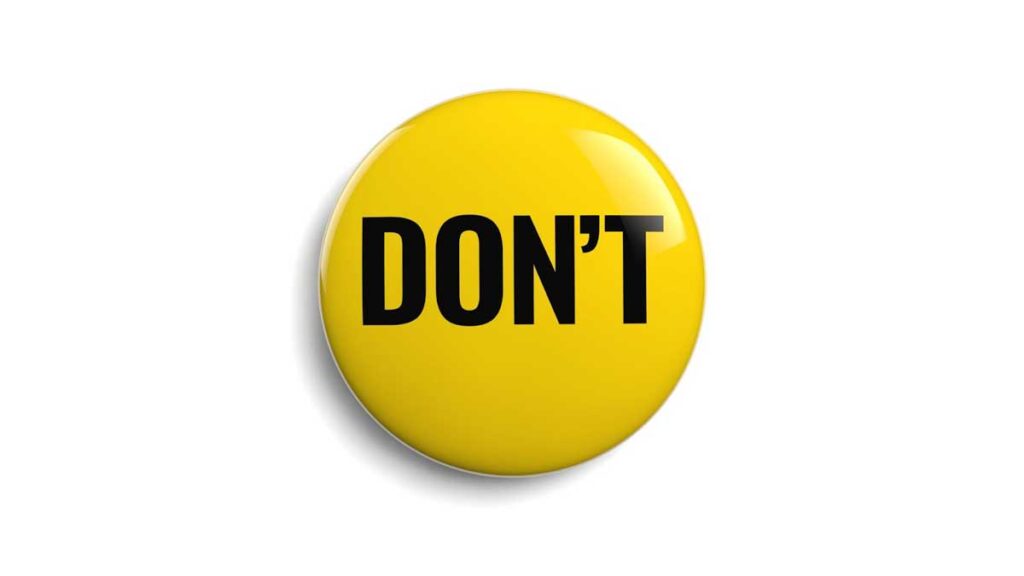
Consider some essential pitfalls to avoid during the product development process, along with best practices for efficient product production.
1. If A Team Isn’t Performing, Get Rid Of Them
You can have a member of your product development strategies team who you believe to be great but who ultimately slows down the process. Or you could find that the individuals you choose lack the ability or inventiveness to do the task.
Make any required adjustments while keeping in mind that your team requires both technical know-how and proficiency as well as interpersonal and teamwork qualities.
2. Avoid Doing It Alone
You could think of yourself as a great innovator, but nobody is an island in creating new products. It is far too simple for an inventor to get obsessed with their creativity and develop it without taking demand from customers, requirements, available resources, or competitive pressures into account.
A focused niche will likely result in high product development costs and weak sales. A fresh set of eyes can suggest features and applications you may not have considered on your own and can discourage you from including ones that would add expense but little usefulness.
3. Don’t Run From The Problems
It happens that a product you develop has one or more catastrophic defects. Make no excuses and still promote your concept or prototype if the testing is unsuccessful. Take the criticism seriously, make the necessary changes, or, if you’re too far along in the process, scrap everything and start again.
4. Don’t Ignore The Expense
It might be expensive to develop a new product. Don’t give in to the temptation to ignore the rising costs of engineering, programming, and prototype construction because of all the money you expect the product will generate. Most new product launches are unsuccessful, and your entire company might be sucked into a pit of product development expenses.
Also, bear in mind that these goods are intended to be mass-produced. Thus their materials and components must be inexpensive and readily available.



